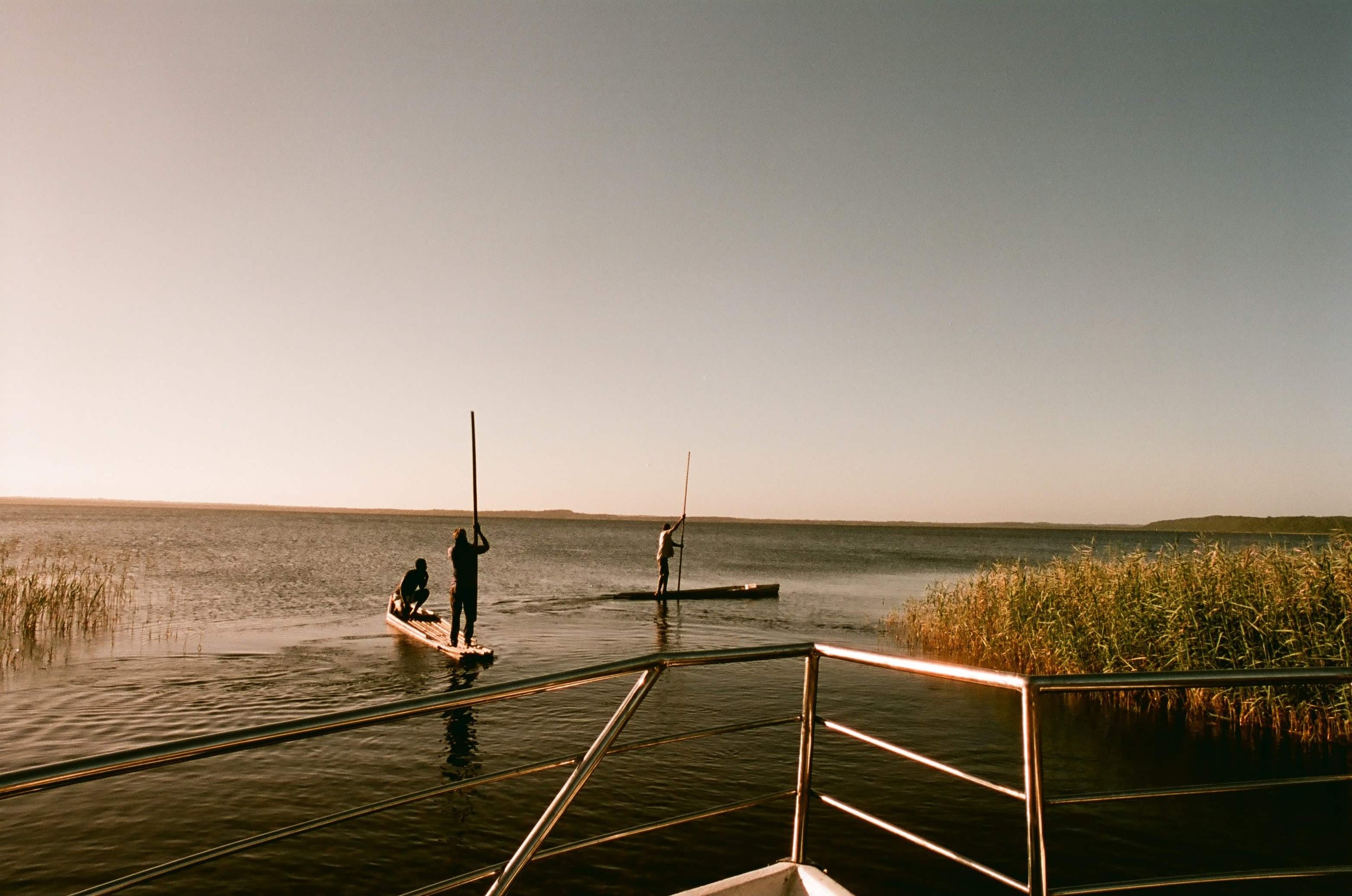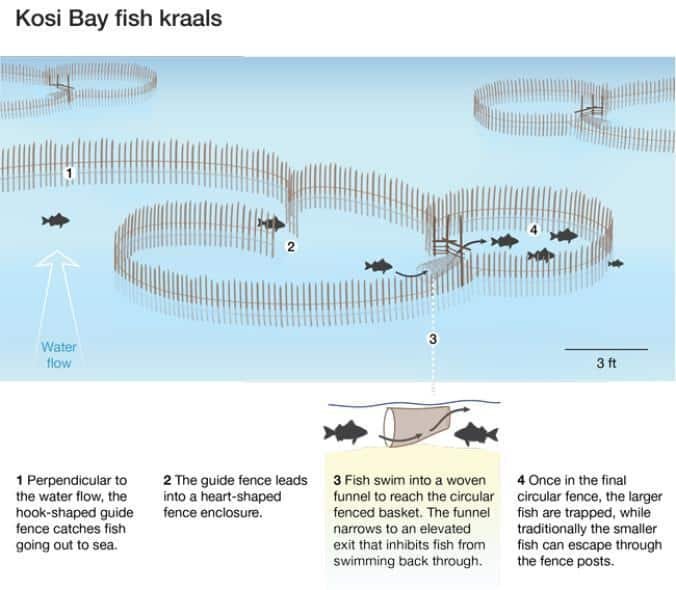Thonga Fish Traps in Kosi Bay
You’ll be forgiven for thinking you’re reading buzzwords out of the sustainable development playbook in this post. That’s because their unavoidable when talking about the culturally rich site of the Thonga fish traps in Kosi Bay. Dotted all along the lake system are intricately woven “fences” or “kraals”. These are the breathtaking structures that create the sustainable fishery of Kosi Bay. However, despite their ancient history, they are examples we should learn from today. Bringing in concepts of circular economy, community cohesion, indigenous innovative architecture and environmental collaboration, the fish traps really are an awesome example of history teaching us about the future.
The History of the Kraals
Sandwiched between the massive lake system and Kosi Mouth and the hissing Indian Ocean, is eNkovukeni. The community has lived in an isolated area on an island making their isolation even more pronounced. Possibly related to this is the deep ties to culture that remain clear on the island and along its’ fish traps. Even today, the people of eNkovukeni, continue to hand down fish traps from generation to generation. There is very little change in the cultural process despite 700 years having passed.
The location of the kraals remains the same by and large. They have not moved greatly as the main catch of fish still follows the same tidal swimming route as they always have. If you look at the below map, you can see where the traps were locate. These areas are close to banks and in areas where the hippo population is lower than other parts of the lake due to salinity of the water (although hippos in this area are able to survive in waters with higher salinity).
In addition to being a sustainable and environmentally friendly, the Thonga Fish Traps also have important cultural and social significance for the Thonga people. The fishing tradition is passed down from generation to generation. Children learn the skills and knowledge needed to construct and maintain the traps from a young age. The fishing also provides an important source of income for the Thonga people, with the sale of fish at local markets contributing to the local economy. Additionally, the construction and materials of the traps, though slightly tweaked remain largely the same.
Construction of the Traps
The fish traps consist of a series of wooden structures that form a maze of channels and dams that allow fish to enter but not leave. The Thonga people have a deep respect for the ocean and the creatures that live within it. Therefore, the design of the fish traps is both sustainable and environmentally friendly. The traps are built in such a way that they allow small fish to pass through, ensuring that the breeding stock is left intact and the fish population is not depleted.
The construction of the fish traps is a community effort that involves the entire village. The men of the village are responsible for the construction and maintenance of the traps. The women and children assist in the fishing and the processing of the catch. Using traditional methods, the Thonga people construct fish traps without any modern tools or equipment. They make the traps entirely from natural materials, including reeds for twine, dried branches of the silver oak tree, and palm leaves for additional reinforcement.
The Thonga people deeply understand the natural environment and fish behavior, which is evident in the fish traps’ design. They build the traps at specific points along the estuary where fish congregate during certain times of the year. Additionally, they construct the traps to capitalize on the tides by positioning the channels and dams in a way that creates a natural water flow, leading the fish into the traps.
How they work
Below left is a graphic that explains precisely how the traps work. The below right explains more deeply how to stage four of the left-hand graphic works. The fish trap in stage 4 essentially makes use of an optical illusion that confuses the fish. The big circle would be what the fish would see on the entrance, a gap big enough for them to fit through. However, once they are through to the other side, the small circle would be what they see when they are through into the circular kraal. Therefore, they are unable to get out (if they are the size of an adult fish).These kraals are simple methods to catch fish, but according to Harris et al (2016) the yield per annum in 2011 was 176 000 Kilograms. This is a massive return and gives good insight into the effectiveness of method for the Thonga Fish Traps in Kosi Bay.
The Gugs Boat Experience
The fish traps hold significant cultural heritage for the Thonga people and showcase their deep understanding of the natural environment. Big Skies is a community-centric business, and experiencing the fish traps is a crucial part of our offerings. We provide an incredible day trip to visit the lake by boat. The excursion includes a transfer from Gugs, taking around 1hr:15, followed by a boat tour, lasting between 3 – 5 hours.
During the tour, you’ll stop along the mangroves to snorkel and search for unique sea and lake creatures. Keep an eye out for the hippo and flamingo populations, as well as other rare birds and wildlife. You’ll also learn all about the Thonga fish traps in Kosi and their cultural and social value. For an additional cost, you can request a fish braai operated by a local fisherman.
Reference List
Harris, J.M., Branch, G.M., Sibiya, C., & Yeld, E. (2016). Artisanal and subsistence fishing: Chapter 7 – Socio-economic uses of the coast. In ResearchGate. Retrieved from https://www.researchgate.net/publication/302962243_Artisanal_and_subsistence_fishing_Chapter_7_Socio-economic_uses_of_the_coast)
McIntyre, C. (2014, November 14). South Africa’s Ancient Fish Traps: What They Reveal About Cooperation. National Geographic. Retrieved from https://www.nationalgeographic.com/history/article/141114-kosi-bay-south-africa-fish-traps








